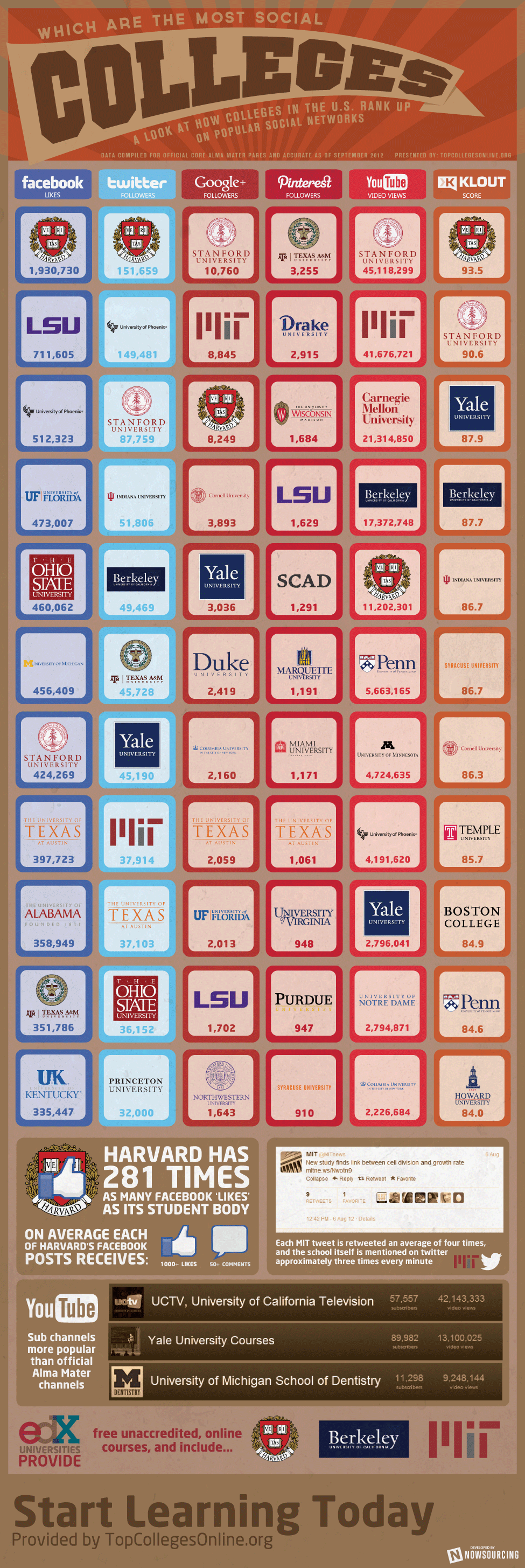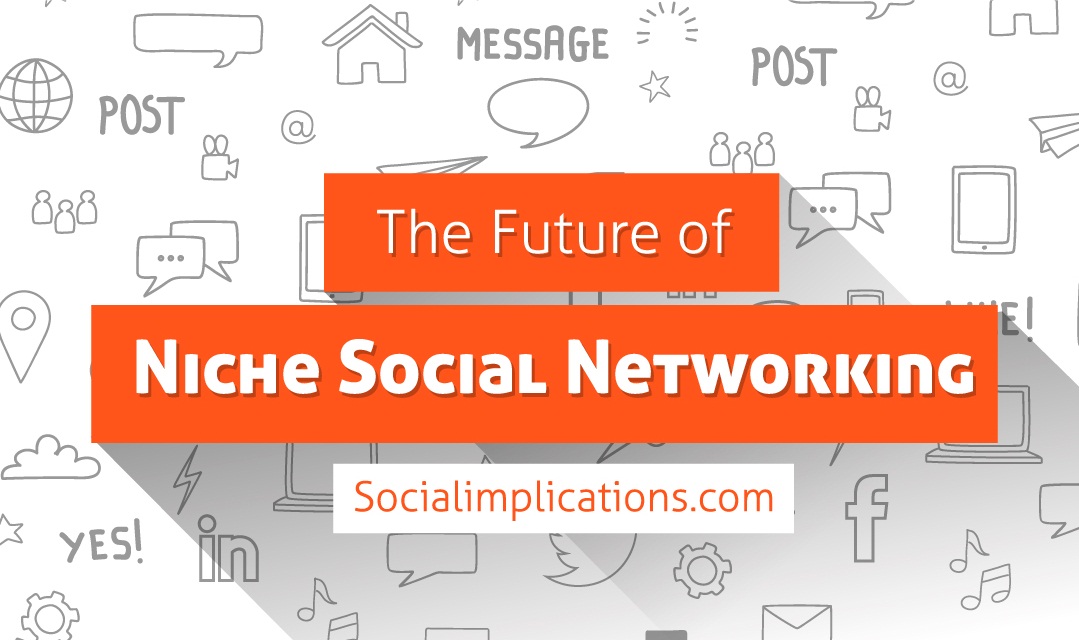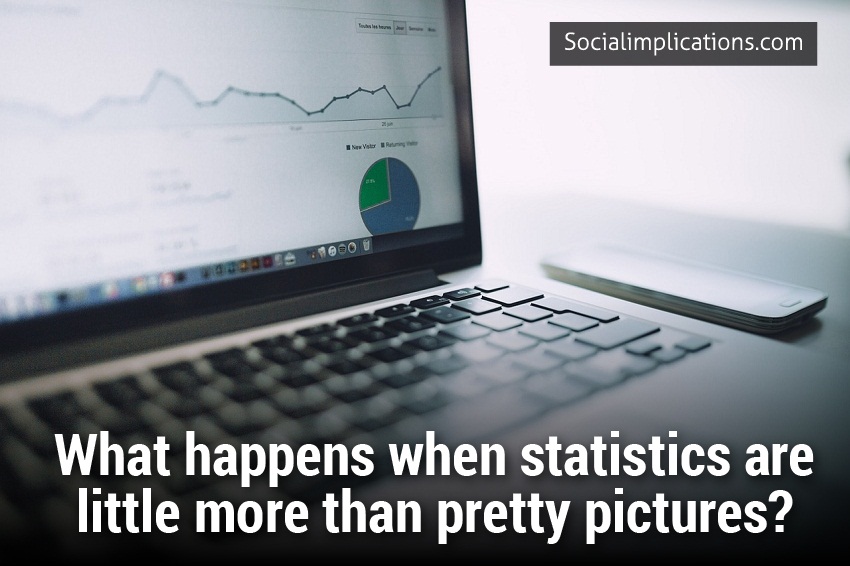Whether you’re a soon to be student, long-time alum longing for your college days, or somewhere in between, chances are college has been an important part of your life. You’re probably also at least somewhat addicted to social media, especially if you’re reading this post 🙂
How often have you thought about those two together? Well, that’s exactly what this infographic, courtesy of topcollegeonline.org set out to do. It gives a breakdown of the top college by social channel along with some interesting call-outs, such as the fact that MIT is tweeted approximately 3 times each minute.

Source: Top Colleges Online
DISTANCE LEARNING
Interested in attending college or doing some coursework online? Here are some resources for finding the best distance learning sites plus colleges that may offer online degrees:














These numbers are so misleading and I’d say meaningless, to a point. Break out the followers into categories and now we are talking. If you have, say 100,000, followers how many of them are current students/faculty/staff, alumni, parents, community folks, other schools, marketers, people looking to self promote on the big sites, spammers, dead accounts, etc… If you can’t look at the numbers in that granular a fashion, it’s all a popularity contest and you don’t truly know your audience. For example, I can tell that Harvard has 10% fake accounts and 32% inactive accounts following them. A little more than half of Harvard’s followers are real and active. 100,000+ accounts connected to you doesn’t’ look so impressive then. http://fakers.statuspeople.com/Fakers/Scores
This isn’t just a numbers game. While we don’t yet have really good social media analytics tools that cover all sites, we do have some things we can examine. So for Harvard’s Facebook page with over 1.9 million likes, they can only generate on average 50 comments per post and 1000 likes? That’s a mere .002% comment interaction and .05% like interaction. Social? Really? Schools are lacking in using these tools socially; they are still mostly just one-way platforms. Many of the smaller schools are doing a better job at using “social” media.
Hello Brian,
I agree that most statistics are too broad to be very effective. About all these do is let us know which colleges have a presence on which social networks and which have the most accounts – real or fake – inactive or being used – current students or faculty or alumni.
It is also true that many are focusing on all the wrong things in social media. They are either using them as broadcast mediums or are sharing and retweeting instead of building relationships. It takes a while to realize that what matters is real interactions on a consistent basis with individuals who are relevant to whatever your goals are for being active in social media.
What has always been true and is likely to continue for a very long time is that there are far more passive receivers than people who interact. That was true in forums and it is still true in blog comments and even social networking – where it is easier to be active.
A realistic estimate is that only 1-2% of the people reading a forum or blog post are going to comment. The rest are lurking and may someday say something – and many never comment at all. I suspect that number is higher for social media – especially on Facebook where people have family and friends they talk to using that platform – but I haven’t seen any stats on that.
One thing for sure is that some will NEVER interact and we should not dismiss them as unimportant. They ARE often loyal readers and for a business likely to be customers. They just aren’t “like us” – those of us comfortable sharing our opinions and writing publicly.
I’m one of those people who regularly visits blogs but who doesn’t always comment. A post has to really push me to make me take the time. I’m simply busy. I try to read what my colleagues write. I try to comment on a few key blogs of the people I network with the most. But there just isn’t enough time in a day to comment on everything. And I’d rather read without commenting than miss out on the content. Finding time to even read the blogs is difficult enough at times. And as Gail says, not commenting doesn’t mean a reader has no value. I frequently purchase products from the bloggers I know and trust for example, whether or not I interact publicly on their blog.